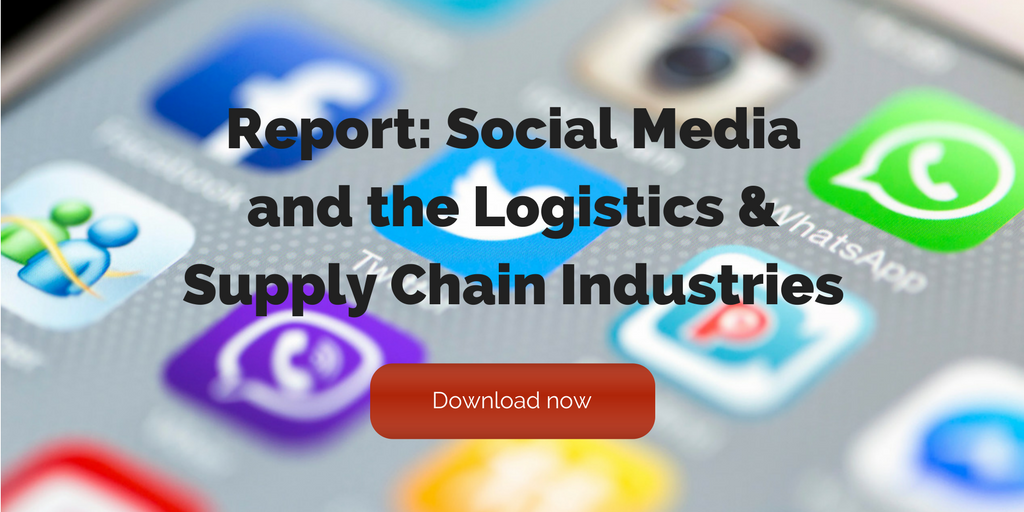
by Fronetics | Mar 8, 2017 | Blog, Diversity, Leadership, Strategy, Talent
Gender diversity is generally viewed as a women’s issue. It is not.
Research conducted by McKinsey & Company and LeanIn.org finds that despite corporate America’s stated commitment to gender diversity, outcomes are not changing. Moreover, the research finds that employees do not believe companies are taking the necessary steps to enact change. The study’s authors contend: “It is time for a new gender-equality playbook. The old one isn’t working. We need bolder leadership and more exacting execution.” While I agree that these are necessary for change, I don’t believe change will occur unless we reframe the issue.
Gender diversity is an economic issue. The McKinsey Global Institute estimates that as much as 26%, or $28 trillion, could be added to annual global GDP in 2025 if women were to participate in the economy identically to men. This is unsurprising given current data.
Companies in the top quartile for gender diversity are 15% more likely to have financial returns above their respective national industry medians. And a review of global stocks finds that companies with higher levels of gender diversity deliver higher returns with less volatility.
Gender-diverse leadership improves performance
Looking specifically at the impact of increased gender diversity in leadership positions, the results are even more pronounced.
Female CEOs in the Fortune 1000 drive three times the returns as S&P 500 enterprises run predominantly by male CEOs. Large companies with a higher proportion of women on executive committees realized a 41% higher return on equity and 56% better operating results than companies with zero women on executive committees. And companies with three or more women board directors significantly outperformed those with sustained low representation by 84% on return on sales, 60% on return on invested capital, and 46% on return on equity — after just five years.
For change to occur we need to reframe gender diversity not as a women’s issue, but as an economic issue. From the top down, companies need to move from commitment to action not to meet quotas, but because a gender-diverse workforce performs better than one that is not diverse.
In an interview I conducted with Cathy Morris, Senior Vice President and Chief Strategy Officer at Arrow Electronics, Morris drew a similar conclusion: “A better organization is not about the numerical statistics related to diversity. A better organization is about better decision-making. Diversity is essential for companies; diversity enables better decision-making and diminishes group think.”
Until it is recognized that gender diversity is an economic issue, it will be difficult to achieve bolder leadership and to realize more exacting execution, and, thereby, improve gender outcomes.
Related posts:


by Fronetics | Mar 7, 2017 | Blog, Logistics, Marketing, Social Media, Supply Chain
Social listening can help your business gain valuable insight about prospects, monitor your competitors, turn around negative conversations about your company, and earn social influencers.
Every day, conversations are taking place about your company, your products and services, your industry, and your competitors. These conversations are not just happening over the water cooler: They are happening on social media.
These conversations not only provide invaluable (and often strategic) information, they also serve to shape and define your company and your brand. With the advent of social media, the reality is that is the customer who drives your company’s image and brand message. If your company isn’t on social media, you miss out.
Social listening — 4 key benefits
Social listening, or social monitoring, is the process of monitoring social media to identify and assess what is being said about a company, individual, brand, product, or service. Through social listening, your company can gain market intelligence. You learn how your company, products, and services are being perceived. Knowing this information in real time is invaluable.
Here are 4 ways social listening can benefit your business and help you grow revenue.
1. Gain valuable prospect insight
Social media can be an incredible tool for getting to know your leads. Think about it: Social networks possess massive amounts of self-qualified, real-time data about billions of people. Consider the astonishing number of monthly active users on each platform:
- Facebook: 1.86 billion
- LinkedIn: 467 million
- Twitter: 319 million
- Instagram: 600 million
That’s a lot of potential customers. Now think about all of the details users provide on their social profiles and the kinds of things they post about: their preferences, where they live and work, and how they feel about different companies and brands, to name a few. Social listening lets you mine this information to learn about your prospects and customers.
2. Stay ahead of the competition
Social listening allows you to access valuable information about your competitors. You can see what customers are saying about your industry peers and make strategic decisions based on this knowledge. Using programs like Hootsuite, you can monitor keywords and your competitors’ brands and products. Based on your findings, you can make critical changes or create content to increase your brand awareness.
3. Create tone awareness
You know customers are talking about your company, but is the tone a positive one? And if it’s not, how are you responding? Social listening gives you the opportunity to take a negative customer-service situation and not only correct the problem, but improve the customer relationship. By having a personal response to negative comments on social media, your company shows a genuine concern for its customers and an investment in customer satisfaction.
4. Earn key influencers
People value the reviews of their peers over claims from a corporation. In fact, 93% of millennials have made a purchase based on a recommendation from friends and family, and 89% of millennials trust these recommendations more than they do the claims of the brand itself. Hence the rise of the influencer marketing.
Social media influencers are people that encourage others to work with your business through social networking. According to Sprout Social, “Social media managers prize their social media influencers because they drive engagement, discussions and word of mouth for your brand.” Real people talking about their experiences with your products and services helps foster trust in new customers.
Using social intelligence
To reap the benefits of social listening, including increasing your revenue, you need to use the information and intelligence gathered. For example, if you learn via social media that your customers are experiencing issues with a specific product, take steps to determine what the issues are, and then make the appropriate changes.
The Aberdeen Group offers additional examples of how businesses have and can use social listening: “Companies can use the voice of the customer to make critical adjustments and find issues related to inventory allocation, order management, returns management, cost, overall service satisfaction and beyond.”
The opportunities the supply chain and logistics industries can realize through social listening are great. Not participating in social listening results in missed opportunities.
Related posts:


by Fronetics | Mar 6, 2017 | Blog, Leadership, Supply Chain, Talent
Mark Cuban thinks liberal arts grads will be the next in-demand employees. Could they be the answer to the supply chain talent gap?
The supply chain talent gap has been called a “perfect storm.” Every report cites doomsday statistics of the impending crisis when, by 2025, 60 million baby boomers will exit the workforce, leaving only 40 million millennials take their place.
To make matters worse, future supply chain professionals need to master not only the hard analytical skills but also the soft leadership skills fueled by the transition from an industrial economy to an economy grounded in service and information. In numbers, it means only 20% of the workforce will possess the skills required of 60% of all new supply chain jobs.
Today’s supply chain companies face a more immediate challenge, however: filling junior-level positions (1-4 years of experience). According to Rodney Apple, founder and president of SCM Talent Group: “When you land your first job out of college… you’re not actively looking for a new job. So [companies] really have to do a lot of direct sourcing to find the analysts, engineers, inventory managers, and planners and sell them on why they should make a career move at this stage of their career.”
Where can employers find young talent that possesses both critical-thinking skills and future leadership potential?
Liberal arts majors struggle with employment opportunities in today’s economy
Students graduating in the past decade have been hit hard by a challenging economy. Almost ten years out from the Great Recession, 44.5% of recent college graduates still are underemployed, many settling for jobs that don’t require a bachelor’s degree.
This is especially true for liberal arts majors. Research shows that their peers in technical fields like nursing and with qualitative skills like engineering have fared better.
But this may soon change. Billionaire investor and Shark Tank personality Mark Cuban, among others, has recently stated that liberal arts majors will be the next in-demand employees. As more technical jobs like coding become automated, companies will need people with creative and critical-thinking skills to offer a human perspective to the automated output. These skills, of course, are the foundation of a liberal arts education.
Bridging the gap between underemployed liberal arts graduates and supply chain companies
Supply chain companies want to find talented employees that can succeed in junior-level positions now but that also could move into management down the road. “Soft skills” like creativity and problem-solving are crucial to both roles — not to mention, every role in between. “That means sometimes being a leader, sometimes being a good follower, monitoring the progress, meeting deadlines, and working with others across the organization to achieve a common goal,” says Lynne Sarikas, MBA Career Center Director at Northeastern University.
Liberal arts graduates bring these abilities to the workplace. Supply chain companies could be actively recruiting these qualified and eager graduates to fill open junior-level positions now, and then groom them to become future leadership. As more jobs become automated, companies will have additional resources to invest in on-the-job training and professional education for their rising stars.
Educated, qualified employees and the shortage of supply chain talent could be an obvious fit — more obvious than liberal arts and supply chain initially sound together. This untapped market of graduates could be the answer to the supply chain talent gap.
Related posts:

by Fronetics | Mar 2, 2017 | Blog, Content Marketing, Marketing, Social Media
These online benchmarking tools can give you insight into how your industry peers are performing on social media, in keyword searches, and more.
Senior Director of Strategy Kate Lee recently wrote about the importance of benchmarking your marketing performance against your competitors. To define success within your market and industry, you need to look outside what’s going on internally and compare yourself to your peers. This will also help your company identify threats and strategic opportunities.
Benchmarking gives you a context to understand how your marketing efforts are paying off. But running another set of reports and keeping track of all those metrics could be a full-time job within itself — and ain’t nobody got time for that.
The good news is there are some really effective tools available for marketers to quickly, even automatically benchmark their performance against the competition. Let’s take a look at three of these platforms below.
3 tools to benchmark your performance
1) BuzzSumo
BuzzSumo’s slogan, “Add value, be uncommon,” exemplifies its mission: to assist companies in creating the most relevant content for their individual audiences. The comprehensive content tool offers insight on what topics are trending, which influencers have the most reach, and more.
The competitor research feature will be of particular interest to those hoping to do some competitive benchmarking. It offers competitive intelligence, such as:
- What content is getting traction for my competitors?
- On what networks are they having success?
- Who is sharing their content?
- How does our content compare?
Overall this site will save you time that you would have spent compiling and analyzing data about you and your competitors.
Pricing: BuzzSumo’s pricing varies from $79-$599 per month, but there’s a free trial option to help you decide if Buzz Sumo is right for your company.
Ease of use: There’s a lot of information to digest, but the compelling data displays make it as easy as possible.
Clients: Rolling Stone, Expedia, National Geographic, IBM, Capital One
2) Serpstat
Serpstat identifies itself as the “growth-hacking tool of marketing” and the “all-in-one SEO platform for professionals.” It offers an abundance of insightful features to view your data in comparison with your competition. You can find answers to the following questions:
- What keywords are placing your competitors in the top search results?
- What does your competitors’ AdWords and paid search look like?
- What does your competitors’ strategy look like in regard to their budget, ad positions in search results, and cost-per-click for AdWords?
Pricing: Serpstat ranges anywhere from $0-$299.
Ease of use: While Serpstat provides an overwhelming amount of information, their 24/7 user-friendly chat feature makes things a little easier. They also offer a completely free demo via Skype or Google Hangouts in as little as 20 minutes.
Clients: Yves Rocher, Gift Baskets Overseas, GL Marketing
3) Rival IQ
Rival IQ offers “digital marketing analytics with a competitive edge.” Essentially, it allows you to compare your performance in social media, keyword ranking, and content against other companies. You also learn when growth in those categories happens for your company, as well as what is driving it. It answers:
- What do your social media metrics (followers, likes, etc.) look like versus your competitors?
- What do your competitors’ social biographies look like, and what are they changing?
- What do the “best” social media posts look like across your competitive landscape?
Pricing: anywhere from $299-$799. They’ll even work with you to create a customized package. A free trial is also available.
Ease of use: While the information presented is extensive, it is displayed in a way that makes it easy to digest. According to New York Times best-selling author Jay Baer, “Rival IQ is a game-changer. Incredibly useful intelligence about the digital activities and successes of your competitors, delivered quick, easy and smart.”
Clients: Studio Science, the Media Flow, Convince & Convert
These three benchmarking tools can help your business gauge how you’re fairing against the competition. The right one for your company could give you a competitive edge, helping you surpass your goals — and your competition.
Related posts:


by Fronetics | Mar 1, 2017 | Blog, Diversity, Leadership, Logistics, Supply Chain
Fronetics spoke with 6 women leaders in the supply chain and logistics industries about their professional experiences and thoughts on the gender gap.
March is Women’s History Month, a time when we at Fronetics like to focus our attention on inspiring female leaders who are bridging the gender gap in the supply chain and logistics industries.
As we have written about previously, the lack of gender diversity in the supply chain is not because women do not have the skillset and ability to succeed within the industry. In fact, quite the opposite is true.
We believe that it is important to discuss the lack of gender diversity and point to research highlighting why the industry needs to increase the number of women in all positions, including the C-suite. Additionally, it is just as important to highlight the incredible women who already are working within the industry.
We have had the opportunity to interview 6 supply chain leaders about their professional experiences, as well as their thoughts on some of these issues.
6 women leaders in the supply chain
Kendrea Durr-Smith
Director of Global Trade Compliance, Arrow Electronics
Kendrea Durr-Smith has successfully lead a diverse global team to better support the needs of Arrow customers and suppliers. In our interview, she discusses the exciting changes her team has accomplished and offers some advice for women interested in electronics and trade compliance. Read the Durr-Smith interview.
Barbara Jorgensen
Co-Founder and Managing Editor, Electronics Purchasing Strategies
Barbara Jorgensen has more than 20 years’ experience as a journalist, working for leading electronics industry publications. In our interview, she discusses working in the supply chain industry and the changes she’s witnessed — both broadly and in specific regards to gender diversity — over the course of her career. Read the Jorgensen interview.
Hailey McKeefrey
Editor-in-Chief, EBN
In her extensive and distinguished journalistic career, Hailey McKeefrey has remained enthusiastic about the supply chain industry and her role within it. She spoke with us about how the industry has changed and how women interested in holding leadership positions can seize opportunities and advance their careers. Read the McKeefrey interview.
Cathy Morris
Senior Vice President and Chief Strategy Officer, Arrow Electronics
Cathy Morris “stumbled” into the supply chain by coincidence but now holds a top-level leadership role at a Fortune 500 electronics corporation. In our interview, she discusses how she got to where she is today and how to turn each step in a career into a valuable learning experience. Read the Morris interview.
Mickey North Rizza
VP of Strategic Services, BravoSolution
Now a Top Female Supply Chain Executive, North Rizza was a bored pre-law major who switched to materials logistics management when she discovered a love for negotiating when seeking charity items for a sorority fundraiser. She spoke to us about her rise to success, people who have helped her along the way, and advice she can offer to women interested in the supply chain. Read the North Rizza interview.
Kelli Saunders
President, Morai Logistics
Kelli Saunders is a big believer in mentorship. And millennials. And opportunities for women in the supply chain. In her interview, she discusses her career, her advice, and her perspective on challenges within the industry. Read the Saunders interview.
Throughout the month of March, we plan to continue this interview series to shine the spotlight on more of the admirable women who make the supply chain and logistics industries run. Make sure you’re subscribed to our blog or following us on social media to catch them all.
Related posts:










